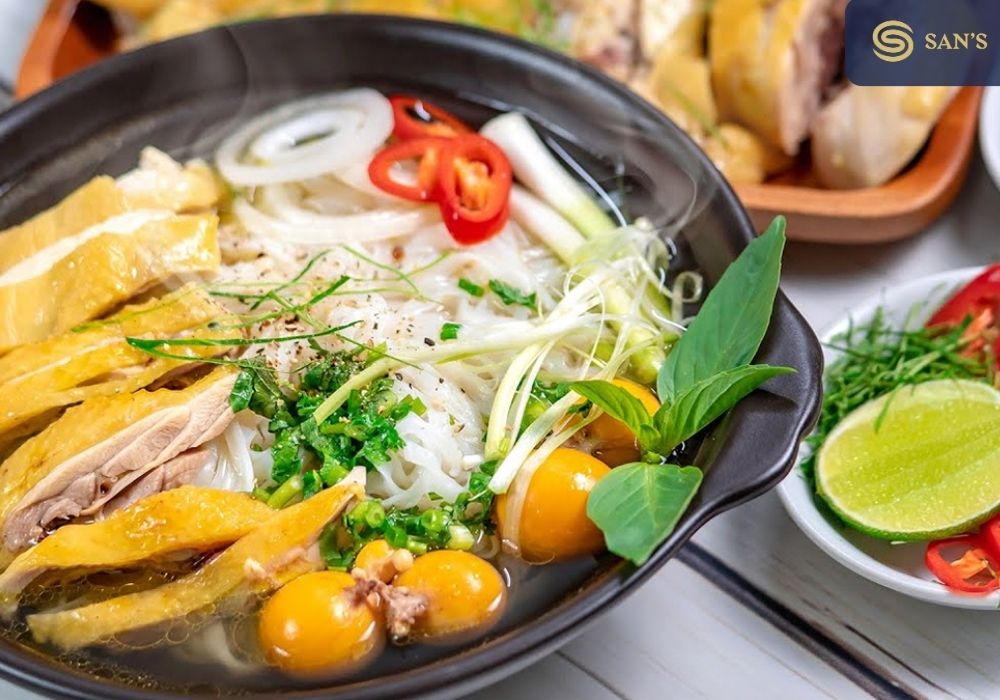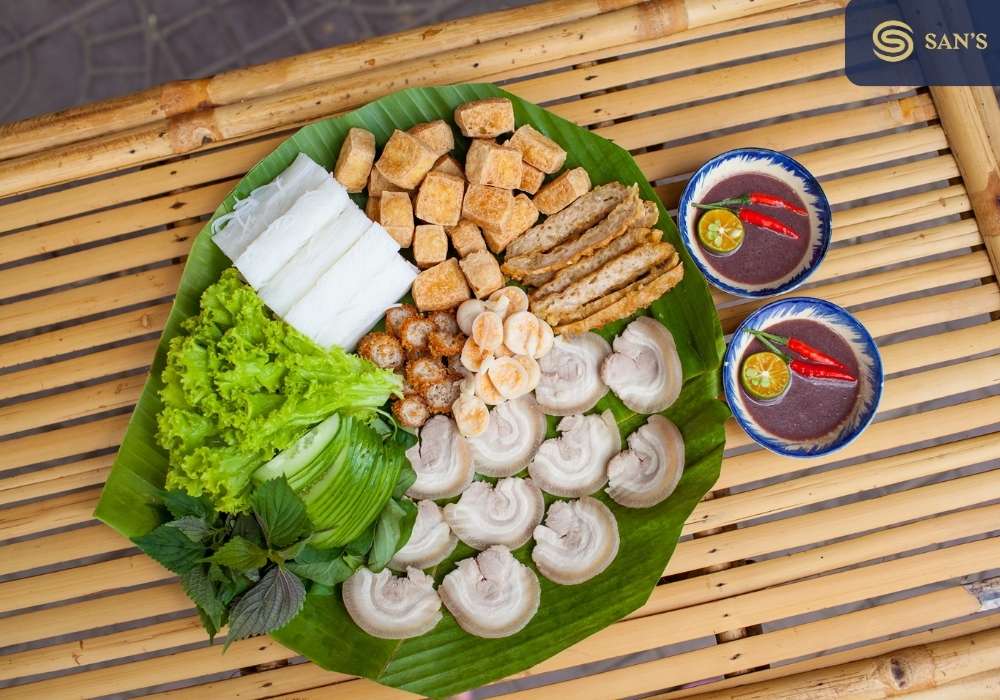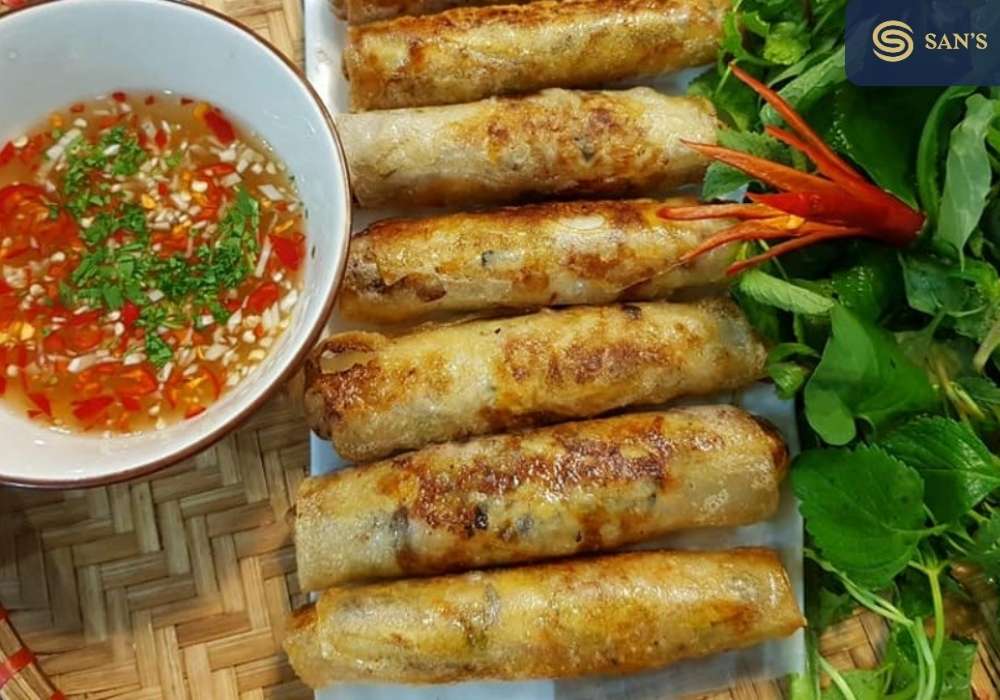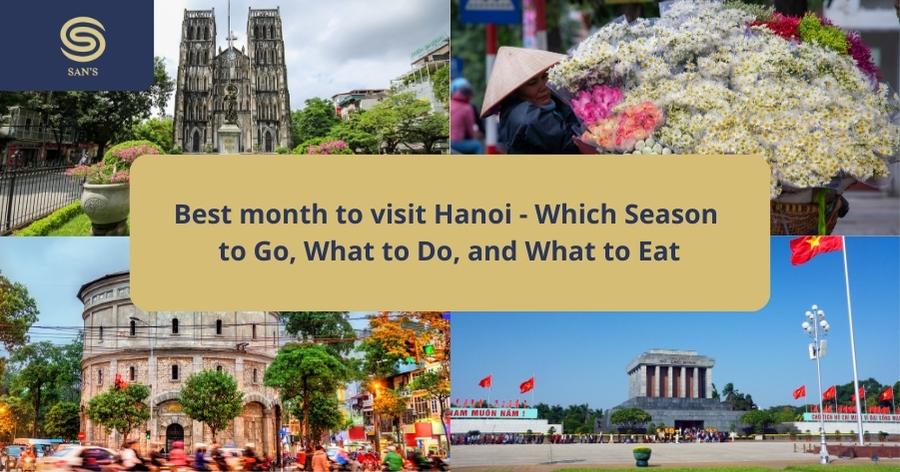Nestled in the heart of Southeast Asia, Vietnam is a land of timeless traditions, intertwined histories, and most notably, a culinary heritage that’s unparalleled in its depth and flavor. The country’s geography, stretching from misty mountains in the north to the fertile Mekong Delta in the south, contributes to an array of ingredients that form the basis of dishes renowned worldwide. But if one were to pinpoint the soul of Vietnamese cuisine, it would undeniably be its street food.

Vietnamese street food is more than just a quick meal option; it embodies the nation’s spirit and tells tales of its past. As you walk the bustling streets of cities like Hanoi or Ho Chi Minh, you’re greeted with a cacophony of sizzling woks, the aromatic allure of simmering broths, and vendors passionately crafting dishes handed down through generations.
For many Vietnamese, these street-side stalls are reminiscent of home-cooked meals, and for visitors, they offer an authentic glimpse into the country’s culture. From the morning rituals of sipping Pho to evening gatherings around Banh Mi stands, street food in Vietnam is an experience, a way of life, and most importantly, the heartbeat of a culinary legacy.
Historical Roots of Vietnamese Street Food
The tapestry of Vietnamese street food is woven with threads of history, reflecting the myriad influences the country has absorbed over the millennia. To bite into a Vietnamese dish is to taste the legacy of conquests, trades, and migrations.
Perhaps the most enduring influence is that of China, Vietnam’s northern neighbor. For over a millennium, Chinese dynasties ruled over Vietnam, bringing with them not just administrative systems, but culinary traditions as well.

Many dishes, especially those from the northern regions of Vietnam, exhibit a Chinese touch. Dumplings, noodle-based soups, and the use of soy sauce and stir-frying techniques bear testimony to this ancient bond.
Yet, while Chinese influences are deep-rooted, it’s impossible to overlook the French impact, a result of the colonial period that spanned nearly a century. The beloved Bánh Mì is a perfect emblem of this fusion.
At its core, it’s a French baguette, but its fillings—ranging from grilled pork, pickled vegetables, to pâté—scream of Vietnam’s indigenous flavors. Likewise, the widespread use of coffee in Vietnam, often sweetened with condensed milk, is another ode to the French era.
The tapestry doesn’t end there. Vietnam’s Southeast Asian neighbors have also left indelible imprints. The spice-forward flavors, use of herbs, and the shared love for rice and fish sauce are common threads that run through this regional culinary mosaic.
However, amid these external influences, the role of the street food vendor stands as a symbol of Vietnam’s resilience and innovation. In ancient Vietnam, these vendors were often migrants or peasants looking to supplement their income.
They played a vital role in democratizing food, making it accessible to everyone, from the royals and nobles to the common folk. Their movable carts became centers of innovation, where recipes were tweaked and new dishes birthed, giving rise to what we recognize today as the hallmarks of Vietnamese street food.
Iconic Vietnamese Street Food Dishes
Pho – A Deep Dive into This Beloved Noodle Soup
Historical Origins and Regional Variations: Pho’s origin, while debated, is largely attributed to Northern Vietnam near Hanoi. The dish then traveled south with migrating populations, adapting to local tastes and available ingredients, giving rise to different regional variations. While the North (Pho Bac) offers a clearer broth and wider noodles, the South (Pho Saigon) presents a sweeter broth, thinner noodles, and a broader array of garnishes.

Key Ingredients and Preparation Methods: At its essence, Pho consists of rice noodles in a beef or chicken broth. The broth, often simmered for hours, is flavored with spices like star anise, cardamom, cinnamon, and clove. It’s typically served with thinly sliced meat and garnished with fresh herbs like basil, mint, lime, and bean sprouts.
>>> Hanoi Street food: 10 Types of Noodle
Banh Mi – The Fusion of Vietnamese and French Flavors in a Sandwich
Its Roots in French Colonialism: When the French colonized Vietnam, they introduced the baguette. Over time, local bakers made modifications using rice flour, yielding a lighter, crispier bread. The Vietnamese then filled this French import with local ingredients, resulting in the Banh Mi.

Variations and Favorite Fillings: The fillings for Banh Mi are diverse, including grilled pork, chicken, pâté, cured ham, and even tofu. Complemented with pickled vegetables, cilantro, and spicy chili, each sandwich becomes a perfect medley of flavors and textures.
Goi Cuon (Spring Rolls) – Fresh Rolls with a Delightful Dipping Sauce
Ingredients, Fillings, and the Cultural Significance: Goi Cuon, or fresh spring rolls, contain shrimp, herbs, pork, vermicelli, and other ingredients wrapped in translucent rice papers. Its freshness contrasts with the fried version, making it a favorite healthy choice. Goi Cuon holds cultural significance, especially during Tet (Vietnamese New Year), symbolizing freshness and renewal.
Bun Thit Nuong – Vermicelli Noodles with Grilled Meat
Exploring Its Popularity in Southern Vietnam: Originating from the south, Bun Thit Nuong has become a lunchtime favorite. The dish, often served in a bowl, allows the eater to experience a multitude of flavors in a single bite.

Key Components that Make It a Favorite: Bun Thit Nuong consists of grilled pork (often shredded) over vermicelli noodles and usually topped with nuts, fried shallots, fresh herbs, and fried garlic. The dish is then drizzled with fish sauce. The combination of warm grilled meat and cool noodles offers a delightful contrast.
Other Honorable Mentions:
- Bánh Xèo: A crispy, savory pancake filled with shrimp, pork, and bean sprouts. Its name translates to “sizzling cake”, aptly describing the sound it makes while cooking.
- Bánh Canh: A thick noodle soup with a chewy texture, often accompanied by seafood or pork.
- Nem Rán (also known as Cha Gio): Vietnamese fried spring rolls, filled with a mixture of minced pork, shrimp, crab, and vegetables.
These dishes, each with its unique story and flavor profile, exemplify the rich tapestry of Vietnamese street food, a culinary tradition that has traveled, evolved, and enchanted palates worldwide.
Tips for Travelers
- Observe the Crowd: A busy stall often indicates good quality and a quick turnover of food, ensuring its freshness.
- Check for Cleanliness: While rustic might be part of the charm, the cooking area should appear clean. Check if ingredients are covered and if cooked food is kept away from raw ingredients.
- Watch the Preparation: If possible, watch how the food is prepared. This can provide insights into the cleanliness and professionalism of the vendor.
- Smell the Surroundings: An off-putting smell is a big no-no. Fresh ingredients have a pleasant aroma, while stale or rotten ones do not.
- Research Ahead: Before heading out, look for recommendations online. Travel forums, blogs, and apps can provide insights into popular and reputable street food hubs.
- Trust Local Insight: When in doubt, ask locals or fellow travelers. They can often guide you to their favorite spots.
- Queue Politely: If there’s a line, wait your turn. Jumping the queue is frowned upon.
- Use Both Hands: When handing over money or receiving your food, it’s polite in many cultures, including Vietnamese, to use both hands.
- Ask Before Snapping: While the vibrant street food scene might be a photographer’s dream, always ask the vendor before taking pictures, as some might find it intrusive.
Vietnamese street food, with its intricate balance of flavors, vibrant colors, and deep-rooted history, has transcended its national boundaries to tantalize palates and capture hearts worldwide. From bustling markets in Hanoi to upscale restaurants in New York or London, the allure of dishes like Pho or Banh Mi is undeniable.

Their global appeal is a testament not just to their delectable taste but also to the rich tapestry of Vietnamese culture and history that they represent.
As the world becomes increasingly interconnected, so does our collective culinary curiosity. The rising popularity of Vietnamese street food is a testament to this global shift towards seeking authenticity, flavor, and a genuine connection to the stories behind the food we consume.
Each bite is a journey, transporting us to the streets of Vietnam, letting us hear the sizzle, smell the aromas, and feel the passion of generations of vendors who have perfected their craft.
FAQs about Vietnamese Street Food
1. What is the most popular Vietnamese street food dish?
Answer: While there are many popular dishes, Pho, a flavorful noodle soup with beef or chicken, is arguably the most famous and beloved Vietnamese street food dish both locally and internationally.
2. Is Vietnamese street food safe to eat for tourists?
Answer: Yes, Vietnamese street food is generally safe for tourists. However, it’s essential to choose reputable and clean stalls, avoid raw produce if unsure about water quality, and consume freshly cooked items.
3. Are vegetarian or vegan options available in Vietnamese street food?
Answer: Absolutely! Vietnam offers various vegetarian and vegan street food options, including tofu-based dishes, vegetable spring rolls, and vegetarian Pho, among others.
4. How spicy is Vietnamese food?
Answer: Vietnamese food is known for its balanced flavors rather than extreme spiciness. However, many dishes come with chili on the side, allowing diners to adjust the heat level to their liking.
5. What drinks are commonly paired with Vietnamese street food?
Answer: Popular drinks include “nuoc mia” (sugarcane juice), Vietnamese iced coffee (cà phê sữa đá), and “bia hoi” (a type of draft beer popular in the north).
6. What’s the average cost of a street food meal in Vietnam?
Answer: While prices can vary based on location and dish, many street food meals are incredibly affordable, often costing just a few US dollars or even less.
7. Can I find Vietnamese street food outside of Vietnam?
Answer: Yes, Vietnamese cuisine, especially street food, has gained immense popularity globally. From food trucks in the US to restaurants in Europe, there are ample opportunities to enjoy these flavors worldwide.
8. What’s the significance of the small plastic stools at street food stalls in Vietnam?
Answer: The small plastic stools are a staple of Vietnamese street food culture, promoting a casual and communal dining atmosphere. They’re not only practical for vendors due to their portability but also create an intimate, ground-level dining experience for patrons.
9. Are there regional variations in Vietnamese street food?
Answer: Definitely! Vietnam’s diverse geography and cultural influences mean that street food can vary significantly from the north to the south. Each region has its specialties and unique takes on common dishes.
10. How do I say “delicious” in Vietnamese?
Answer: To express that something is delicious in Vietnamese, you can say “ngon.”
>> See more: Thing to do in Hanoi





